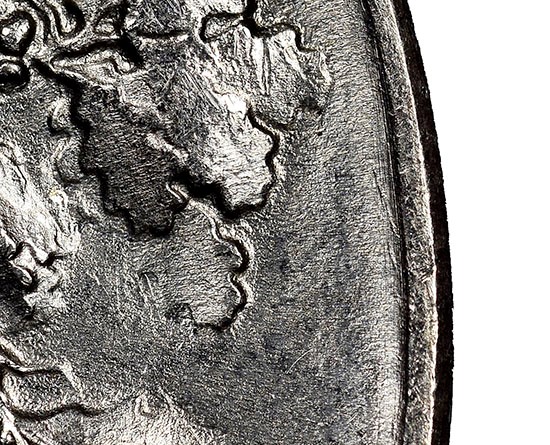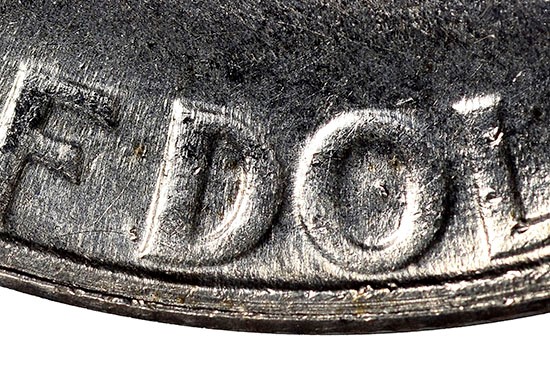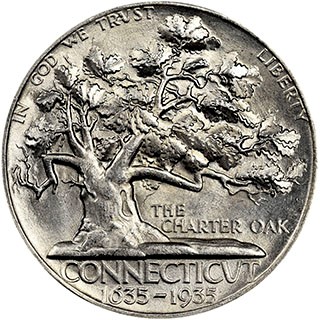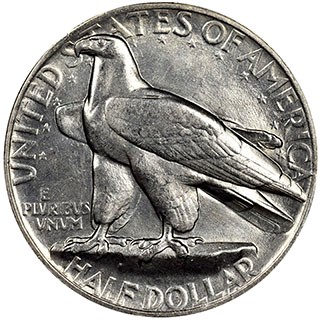Counterfeit Detection: 1935 Connecticut Half Dollar
Posted on 10/13/2020
The 1935 Connecticut Tercentenary Half Dollar was popular in its day, with its entire mintage of 25,000 selling out quickly. The bold designs include the state’s storied Charter Oak on the obverse (an element that re-appeared decades later on the Connecticut State Quarter, even though the tree itself fell in a storm in 1856).
Today, Mint State examples of the Connecticut Tercentenary Half Dollar sell for several hundred dollars. NGC has graded more than 3,500 examples of this coin, one of the most beloved of the classic commemorative series.
Recently, NGC graders received a submission of an example of this coin that did not seem right.
At first glance, it appears to be a genuine example. However, the coin exhibits weak details throughout and an absence of noticeable circular lathe lines radiating from the center which are commonly seen on this issue. Both of these are signs that the coin may be a counterfeit, so an experienced numismatist would know to take a closer look.
 |
|
| Closeup view of the reverse of the counterfeit. Click image to enlarge. |
|
The bottom of the reverse exhibits lumps of metal, both to the bottom-left of the D and inside the O of the word DOLLAR. This is another indication that points to a counterfeit coin.
 |
|
| Closeup view of the obverse of the counterfeit. Click image to enlarge. |
|
Finally, near the top of the obverse (at 1 o’clock), tool marks can be seen emerging from the rim. These are a telltale sign that a counterfeit has had to alter the surface of a coin to remove a glaring imperfection.
Together, these problems lead to the conclusion that this is indeed a die-struck counterfeit. Because the counterfeiter used a genuine coin to produce the spurious die, this type of fake can be highly deceptive.
In this case, the counterfeiter even made sure the fake was within the tolerances for weight and metal content, which are expected to be 12.5 grams and .900 fine silver. As expected, the coin contains approximately a third of an ounce of silver. With silver near historic highs, this would still be less than $10 worth of metal – creating a clear incentive for a counterfeiter.
It is likely this fake was struck decades ago, because a die-cast counterfeit of this commemorative coin was first publicized in 1980. Counterfeits sometimes remain tucked away in coin collections for long periods of time, only to re-emerge into the marketplace years later.
If you have any doubts about your own authentication abilities, remember that NGC backs its determinations of authenticity and grade with the NGC Guarantee.
Did you know? NGC has created a comprehensive Counterfeit Detection resource to help collectors and dealers identify counterfeit and altered coins. Visit NGCcoin.com/counterfeit.
Stay Informed
Want news like this delivered to your inbox once a month? Subscribe to the free NGC eNewsletter today!

